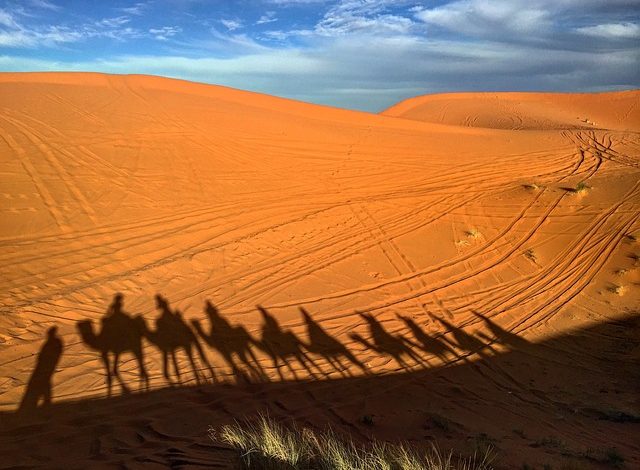Top facts about Morocco, top curiosities

A list of top facts and secrets about Morocco, know before you go:
We present to you our top facts about Morocco, things we have learned on our trips there that we didn’t know and have surprised us:

-
The original people of Morocco:
The original and predominant ethnic group in Morocco is the Amazigh, better known as Berber, with a culture very different from the Arab one.
The Arab ethnicity and culture, being a minority in Morocco, is the one that has been dominant both economically and politically.
So much that from the seventies onwards a process of systematic Arabization of the Berber peoples began, even prohibiting the use of symbols and their language. Today there is greater recognition of Amazigh culture, although it still plays a very marginal role.
-
Morocco’s first capital:
The former imperial capital of Morocco was Marrakech, and that is where the country got its name. Today the capital of Morocco is Rabat.
-
Politics in Morocco:
Morocco is a constitutional monarchy, with an elected Parliament. In practice, according to the gossip, the monarchy of Morocco is the one who really runs the country, since the King has wide executive powers, with the possibility of dissolving the government and the Parliament and directing the military forces.
The current King of Morocco is Mohammed VI, heir to the Arab Alaoui dynasty, present in Morocco since 1666.
-
Mint tea is the national drink:
Among Morocco facts, we talk about Mint tea or Moorish tea, as the Spanish call it, it is a drink consumed in the Maghreb countries and especially in Morocco. The main ingredients are Chinese green tea, mint leaves, and lots of sugar.
It is a drink that is drunk at all hours and is offered in homes and stores as a sign of hospitality. Not drinking it is considered an offense.
Mint tea originated in Morocco when the English introduced green tea from China in 1854. The mixture of mint infusions traditionally consumed in the Maghreb with green tea gave rise to mint green tea.
Today, the green tea consumed in Morocco still comes from China.
It is a drink widely consumed by the Berbers, even when there are temperatures of up to 40 degrees in the shade too, curiously, cool the body.
-
Morocco is the world’s largest producer and exporter of sardines:
When talking about Morocco facts, we must speak about its sea goods. It is also a major producer and exporter of citrus fruits such as oranges and tangerines, leather goods, tomatoes, olives, dates, rose water, and argan oil.
-
Morocco is one of the largest illegal producers of Hashish:
There are large marijuana plantations in northern Morocco, the export of which generates income for many Moroccan families. It is estimated that 80% of hashish consumed in Europe comes from Morocco.
-
The predominant religion is Islam:
The majority of Muslims are Sunni.
-
Oukaimeden, in the Atlas Mountains, is the highest ski resort in Africa:
Incredible as it may seem, skiing is possible in Morocco. Oukaimeden, which offers 20 km of skiing, is located in the Toubkal, the highest mountain in Morocco, at 4,164 meters high. One of Morocco’s amazing facts. Book a Morocco tour with locals who know these spots.
-
Berber women with tattooed faces can still be seen in Morocco:
The tradition comes from times before Islam when women tattooed their faces with geometric figures as a way of distinguishing the different members of each tribe.
-
The city of Fez has the oldest university in the world:
In Fez is the oldest university in the world, founded in 857. Also, Fez is also the oldest medieval city in the world, considered a UNESCO World Heritage Site.
-
The national dress is the djellaba (djellaba):
The djellaba is a loose-fitting tunic with a hood and is worn by both men and women. Almost all men wear yellow slippers (shoes).
-
Morocco has served as a setting for numerous films and as an inspiration for many writers:
Films such as Lawrence of Arabia, Game of Thrones, Gladiator, or The Sheltering Sky have been shot in Morocco. Curiously, none of the scenes of the famous film Casablanca were shot in Morocco.
In the ’50s and ’60s, Morocco attracted great writers such as Paul Bowles, who lived for 50 years in Morocco, William S. Burroughs, or Jack Kerouac, where they wrote some of their books.
-
The national food dish is couscous:
Due to its history and geographical location, Moroccan food has Arab, Mediterranean, and Berber influences.
The national food dishes are couscous, which is usually served on Fridays, and Harira soup, which is eaten mainly during Ramadan.
-
Jemaa el Fna, the square of Marrakech, was a place of executions of criminals:
Interesting Morocco facts begin from Marrakech, Jamma El Fna square. There are theories that point out that the meaning of Jemaa el Fna is “assembly of extermination” because public executions were carried out there in the 19th century…
Interested to travel to Morocco? it is surely a must-visit country full of amazing destinations to visit.
-
Morocco maintains good relations with Israel:
Most Arab countries deny recognition of Israel as a state since 1948, and although Morocco still does not recognize Israel as a state, the Israeli passport is accepted to enter Morocco and could become the third Muslim country, along with Egypt and Jordan, to make peace with Israel.
-
The national flag bears the symbol of life, health, and knowledge:
The national flag of Morocco was designed by Mulay Yusuf. The red color symbolizes the descendants of Mohammed, the green pentagram symbolizes the Seal of Solomon and the star is the symbol of life, health, and knowledge.
You might be interested to read cheapest countries to buy a property.





